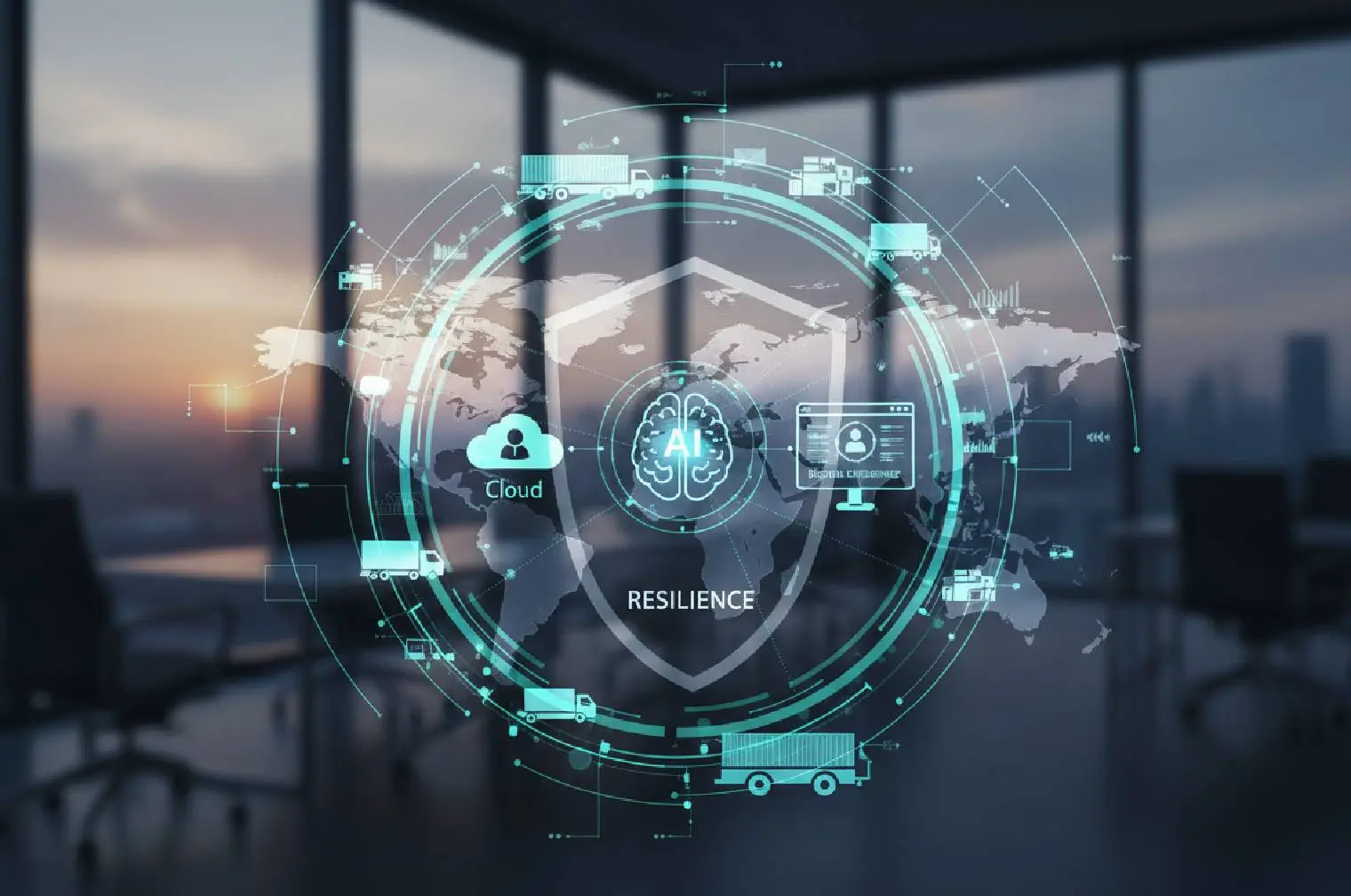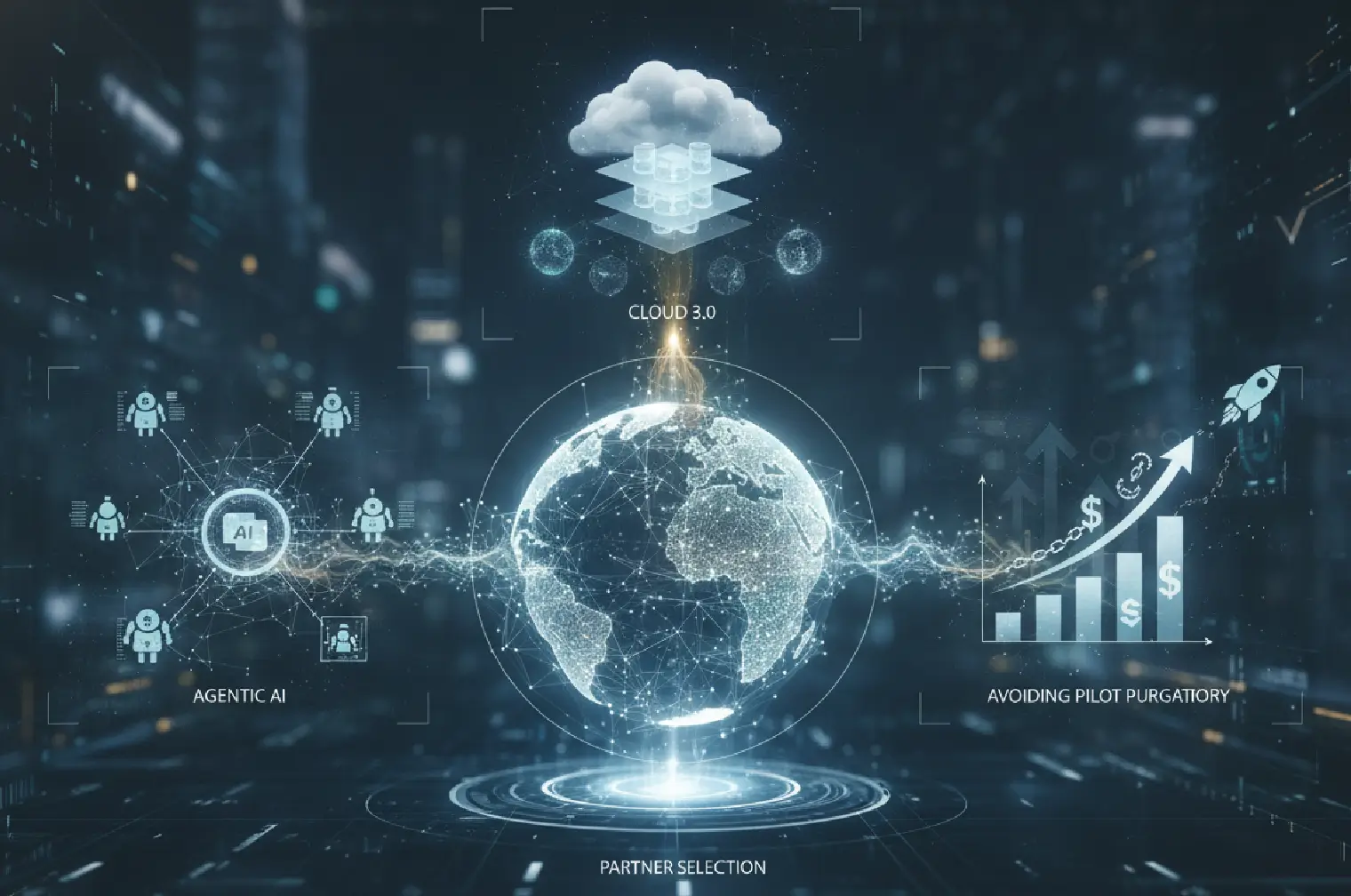Machine Learning and AI for revolution of Tech Companies are changing and streamlining businesses.
Today, resilience is not just a hedge against disruption; it has become the operating system for growth, and in 2026, leaders will earn an advantage by orchestrating the right blend of AI, cloud logistics, and modern digital experiences that amplify speed, visibility, and trust across the value chain.
The organizations that scale AI in supply chain and re-platform core workflows to cloud logistics are already reporting measurable gains in service, cost, and agility that compound under volatility.
The 2026 resilience mandate
Supply chain leaders are doubling down on technology to harden operations and unlock new value, with 55% increasing investments and adoption of transformative tools projected to surge across 11 categories over the next five years.
Executive participation in this shift is deep—more than 1,700 leaders, 81% at the executive level, contributed to the latest MHI–Deloitte benchmark, underscoring a C-suite consensus that resilience is a strategic, not tactical, imperative.
At the same time, resilience is being reframed as a human-centric, tech-forward model that augments decision-making while maintaining the worker at the center of operational design.
Strengthen Your Supply Chain with AI
Improve forecasting, reduce disruptions, and enhance responsiveness with AI in Supply Chain solutions.
Pillar 1: AI in supply chain at scale
AI in supply chain has moved from experimentation to material impact, with leaders most commonly reporting meaningful revenue increases from AI-enabled supply chain and inventory management in 2024.
On the operations side, AI applied to planning and distribution can reduce inventory levels by 20–30% and improve fill rates by 5–8% when deployed via proactive control towers and dynamic replenishment.
Generative capabilities add workflow acceleration—documentation lead times can fall by up to 60%, while logistics coordinators’ workloads drop 10–20% through automation of data entry, reconciliation, and exception handling.
Practical deployment patterns are now well established: predictive demand sensing across tiers, supplier risk early-warning, AI-assisted slotting and labor optimization in DCs, and closed-loop control towers that routinize response to disruption. ViitorCloud helps businesses streamline their supply chain operations using AI and automation.
To accelerate time-to-value, leaders increasingly partner for proven accelerators such as AI consulting, integration, and industry-tuned co-pilots that sit within existing systems and processes rather than forcing rip-and-replace.
Pillar 2: Cloud logistics as the backbone
Cloud logistics underpins modern resilience by providing elastic compute, ecosystem connectivity, and continuous delivery pipelines for rapid innovation cycles in planning, warehousing, and transportation.
Cloud-first foundations make it simpler to orchestrate digital twins, integrate partner data, and roll out updates that compress cycle times while preserving governance at scale. As ecosystems interconnect, cloud-native WMS/TMS, data fabrics, and event-driven integration deliver the visibility and control needed to arbitrate trade-offs in real time during disruption.
For enterprises building or modernizing cloud logistics, targeted services—cloud consulting, migration, automation, and security—help de-risk change while aligning architecture with regulatory and performance requirements across global operations. Our cloud services and consulting capabilities are designed to scale resilience across distributed networks.
Pillar 3: Digital experience as a resilience lever
Customer and partner experience is now a first-class resilience metric, with timeliness, traceability, and reliability serving as proxies for systemic health and competitive differentiation.
The World Bank’s 2023 Logistics Performance Index emphasized the speed of trade and track-and-trace as measurable indicators of logistics maturity, reinforcing why live status, proactive notifications, and self-service must be embedded across the journey.
Digital experience is also a risk mitigator—better interfaces reduce manual error, while self-service portals and intelligent assistance lower cost-to-serve and accelerate recovery during disruptions.
Modernize Logistics with Cloud Efficiency
Enable real-time visibility, seamless coordination, and scalable operations with Cloud Logistics solutions.
Use cases you can deploy in 90–180 days
- Predictive demand sensing and dynamic safety stocks to cut stockouts and reduce working capital through ML-driven segmentation and nowcasting.
- AI-powered control tower that automates data ingestion, flags exceptions, and recommends actions to improve fill rates and shorten response times.
- GenAI for trade documentation to auto-generate, validate, and reconcile forms, reducing lead time by up to 60% and errors across multi-party flows.
- Cloud-native TMS/WMS enhancements for real-time ETA/ETD, dock scheduling, and slotting optimization to increase asset utilization and OTIF.
- Supplier risk early-warning that fuses third-party data, ESG signals, and market indicators to trigger playbooks before service degradation occurs.
Proving value: the performance case
Organizations applying AI in supply chain most often report revenue impacts in supply and inventory domains, validating a focus on short-cycle, performance-linked use cases first.
As autonomy rises, leaders expect reaction and recovery times from disruptions to fall by 62% and 60% respectively, with concurrent gains such as a 5% OTIF lift, a 4% COGS reduction, 27% shorter order lead times, and a 25% productivity increase. Together, these improvements form a compounding advantage—faster sensing, faster decisions, and faster execution that frees capacity for growth and continuous reinvention.
Governance, risk, and human-centric design
Resilience programs succeed when human-centricity and governance are designed in from the start, balancing automation with transparency, controllability, and clear escalation paths.
Deloitte highlights the role of digital twins for scenario planning and tier-n visibility, which—when combined with cloud security and role-based access—enable responsible scaling of insights and actions. Elastic guardrails also extend to model lifecycle management, data quality, and auditability to ensure AI remains reliable under stress and compliant across jurisdictions.
A pragmatic 4-step roadmap
- Baseline maturity and value targets across service, cost, and capital, tying KPIs to discrete use cases with measurable time-to-value.
- Establish a cloud logistics backbone with secure data pipelines and APIs to integrate suppliers, carriers, and partners for real-time visibility.
- Launch two AI in supply chain pilots—one planning-centric and one execution-centric—to diversify benefits and de-risk change.
- Operationalize a control tower with tiered playbooks and governance, then scale proven patterns with enablement and change management.
Deliver a Connected Digital Experience
Enhance stakeholder experiences across your supply chain ecosystem with seamless Digital Experience solutions.
Why ViitorCloud for 2026
Enterprises choose ViitorCloud as a tech-innovation partner to move from pilots to production with AI-first engineering, cloud modernization, and domain-tuned accelerators that compress time-to-value. The team brings integrated capabilities—AI consulting and integration, cloud consulting and automation, and logistics-specific solutions—to deliver resilient, end-to-end outcomes across planning, warehousing, and transportation.
Final Words
2026 will reward leaders who treat resilience as a designed capability—built on AI in supply chain, powered by cloud logistics, and experienced through intuitive, transparent digital touchpoints that build confidence with every shipment.
If you are ready to operationalize resilience with a partner that brings engineering depth and industry context for the U.S. market—while executing with speed and accountability, contact ViitorCloud to build a roadmap that delivers near-term wins and a durable advantage for the long cycle ahead.









